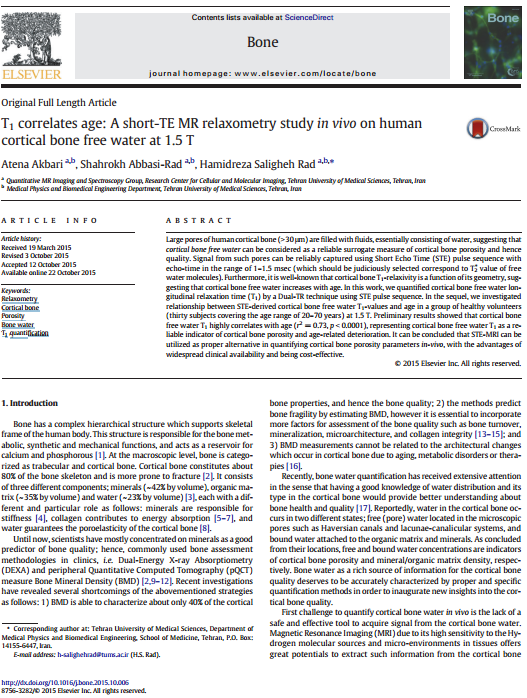T1 Correlates Age: A Short-TE MR Relaxometry Study in vivo on Human Cortical Bone Free Water at 1.5T
Abstract
Large pores of human cortical bone (N30 μm) are filled with fluids, essentially consisting of water, suggesting that cortical bone free water can be considered as a reliable surrogate measure of cortical bone porosity and hence quality. Signal from such pores can be reliably captured using Short Echo Time (STE) pulse sequence with echo-time in the range of 1–1.5 msec (which should be judiciously selected correspond to T2 value of free water molecules). Furthermore, it is well-known that cortical bone T1-relaxivity is a function of its geometry, suggesting that cortical bone free water increases with age. In this work, we quantified cortical bone free water longitudinal relaxation time (T1) by a Dual-TR technique using STE pulse sequence. In the sequel, we investigated relationship between STE-derived cortical bone free water T1-values and age in a group of healthy volunteers (thirty subjects covering the age range of 20–70 years) at 1.5 T. Preliminary results showed that cortical bone free water T1 highly correlates with age (r2 = 0.73, p b 0.0001), representing cortical bone free water T1 as a reliable indicator of cortical bone porosity and age-related deterioration. It can be concluded that STE-MRI can be utilized as proper alternative in quantifying cortical bone porosity parameters in-vivo, with the advantages of widespread clinical availability and being cost-effective.

